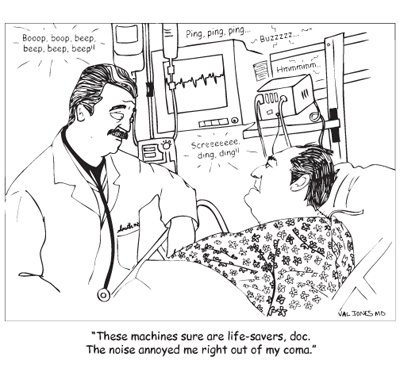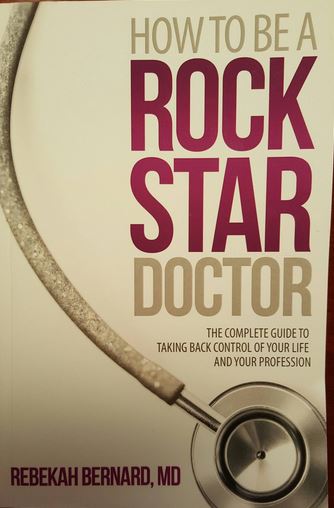May 12th, 2011 by GruntDoc in Humor, True Stories
No Comments »

Laugh if you want, this helps my life, at least at work.
For months after starting my current gig, I would sometimes get to work with everything in all my pockets, and sometimes not.
I’d forget my ID, or my pen, or my phone, or my…well, there you go.
Then my OCD started to kick in, and, a Mental Checklist was born.
I now have to get 6 things, and set them on the table or I screw it up every time.
- ID
- stethoscope
- my phone
- work phone
- pen
- sharp stick (I’ve written about this before, but cannot find it. You should search an ER blog for the word ‘knife’ and then wonder why you bothered).
Last week I apparently went against the checklist, and halfway through the shift realized I’d lost my ID. Of course, after about a combined half-hour of fruitless search I gave up, and found it in my bag on the way out. Geez.
Yeah, it sounds stupid. But if it’s stupid and it works, it’s not stupid.
*This blog post was originally published at GruntDoc*
April 17th, 2011 by Bryan Vartabedian, M.D. in Humor, Opinion
No Comments »

 I’m sure you’ve seen them on medical blogs: Disclaimers that remind readers to call 911 in the event of emergency.
I’m sure you’ve seen them on medical blogs: Disclaimers that remind readers to call 911 in the event of emergency.
But is someone choking on a hot dog really going to dial up KevinMD or SeattleMamaDoc for help? Does anyone really believe that 33 charts is the place to deal with your acute airway obstruction when you have a just a couple of minutes to live?
Here’s my theory: I suspect that the first attorney who came up with the 911 disclaimer did so as some sort of perverse joke. And rather than seek the input of their own lawyers, all those who followed simply copied the this original language believing it to be judicious and most conservative. Now it’s the longest running gag in legal history. Read more »
*This blog post was originally published at 33 Charts*
March 25th, 2011 by GruntDoc in True Stories
No Comments »

We have (mostly) non-EM studs rotate through our ED on their sometimes mandatory, sometimes killing a month elective ED tour. There is little reason for EM destined students to rotate in our place, as we don’t have a residency and we’re not part of the club of EM residency directors ( i.e. letter of rec writers). So, usually not EM hard chargers. Nothing wrong with that, but they’re not my cuppa tea.
Today’s lesson: shoulder reduction for the non-EM Stud, and for me in What We Do Isn’t Usual.
As is our norm, after a thorough Hx, PE, Xrays and Time Out, was in on a 2 doc reduction; One does the sedation, one the reduction. I don’t typically have students follow me: I don’t dislike the students, but I don’t have them. Personal preference.
Today, a shoulder reduction. My colleagues’ student. Not destined for a life in the ED (already matched, not in a remotely EM specialty). My colleague is on the sedation, and I’m on the reduction. I, after discussing the technique, in my presence and under my direction, allowed the stud the first attempt at reduction after sedation. No go. Good effort, not enough muscle. Read more »
*This blog post was originally published at GruntDoc*
April 8th, 2008 by Dr. Val Jones in True Stories
2 Comments »
I was working in the ER late one night when I was asked to see an elderly woman with the chief complaint of “I almost fainted.” This complaint carries with it one of the broadest differential diagnoses known to man. What could be the cause of a near fainting episode in an elderly woman? It could be anything from dehydration, to an irregular heart beat, to anemia, to malnutrition, to a urinary tract infection or pneumonia. Pretty much anything could make one swoon when you come to think of it.
And so I met the lady, perched atop a stretcher in one of the ER bays. She was chipper and friendly with a shock of curly white hair. She was sitting up, conversing comfortably with no pain or any bodily complaints whatsoever. She was absolutely charming, taking the time to notice my own disheveled condition and inquiring as to when I’d had my last meal.
Her blood pressure was a little bit low, but she had no fever, or heart rate abnormalities. She was not over or underweight, she was well-groomed and alert. I really doubted that there was anything wrong with the woman, frankly, and was kind of assuming that she had stood up too quickly and had a vasovagal episode.
But out of habit I began my physical exam, from head to toe – methodically looking for abnormalities of the head, eyes, ears, nose, throat, cranial nerves, chest, lungs, back, skin, range of motion of arms, strength, sensation, heart sounds, and then the abdomen. As I placed my cold hand nonchalantly on her belly, my arm instinctively jerked away almost before my cerebral cortex was able to interpret the input. Oh my gosh, there was a pulsatile abdominal mass, clear as the nose on her face!
I was barely able to compose myself and asked her to excuse me. I bolted straight for the attending’s desk, and white as a sheet with wide eyes I stammered: “the lady in bed 3 has a pulsatile abdominal mass!”
The attending stood up immediately and followed me to the lady’s room and confirmed my diagnosis. She had a dissecting abdominal aortic aneurysm. We called the trauma surgery team and she was taken to the OR minutes later. The dear lady survived the surgery and was discharged home in her usual state of pleasantness. I’ll never forget that physical exam finding, and how taking the time to place my hand on her belly was all that was needed to save her life. If I had gone with my suspicion prior to the exam (that she was fine but maybe had a UTI) I may have wasted the precious few minutes she had (before her artery ruptured) on getting a urine sample!
***
For other surprising physical exam findings, check out part 1 and part 2.This post originally appeared on Dr. Val’s blog at RevolutionHealth.com.













